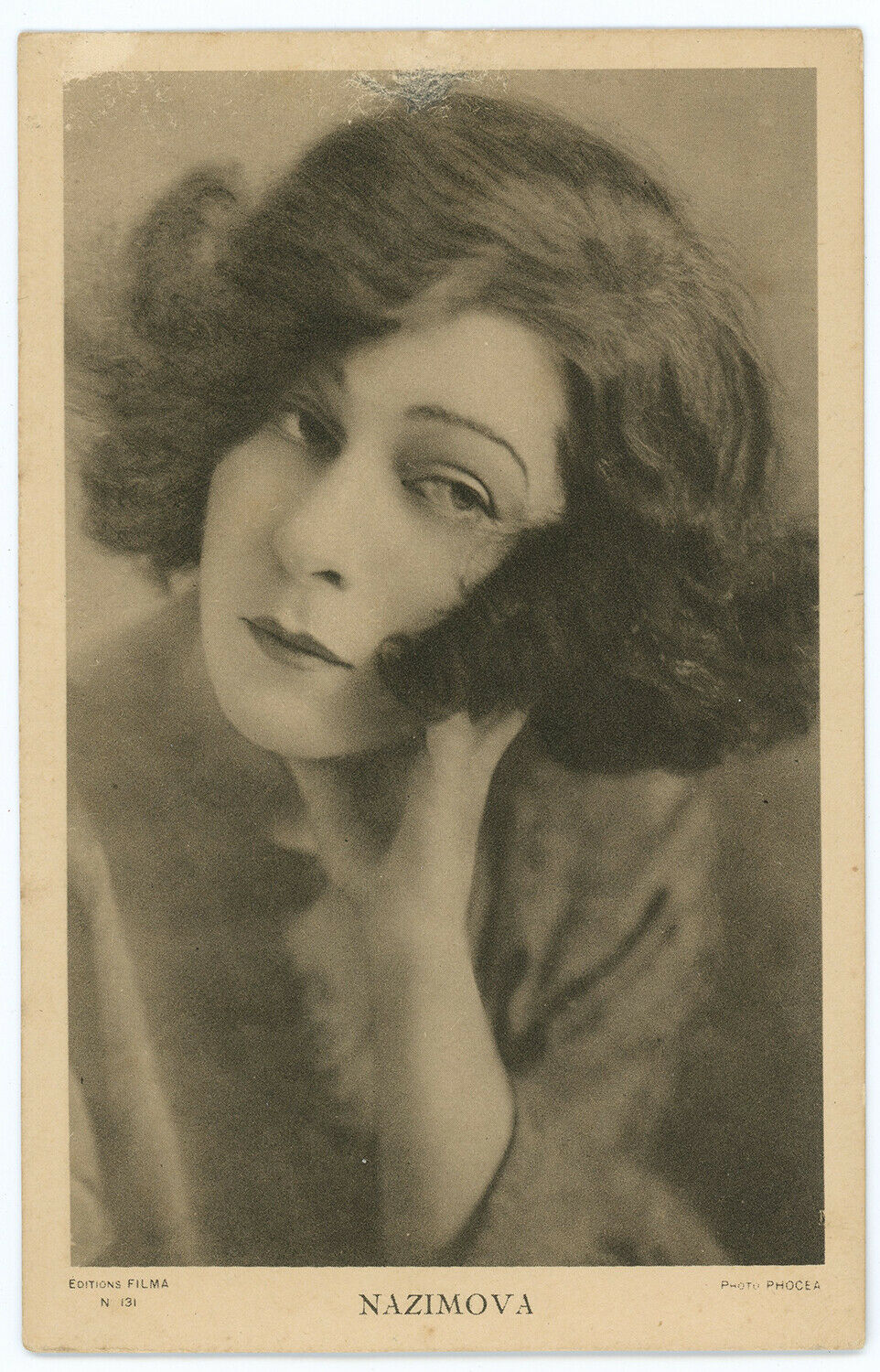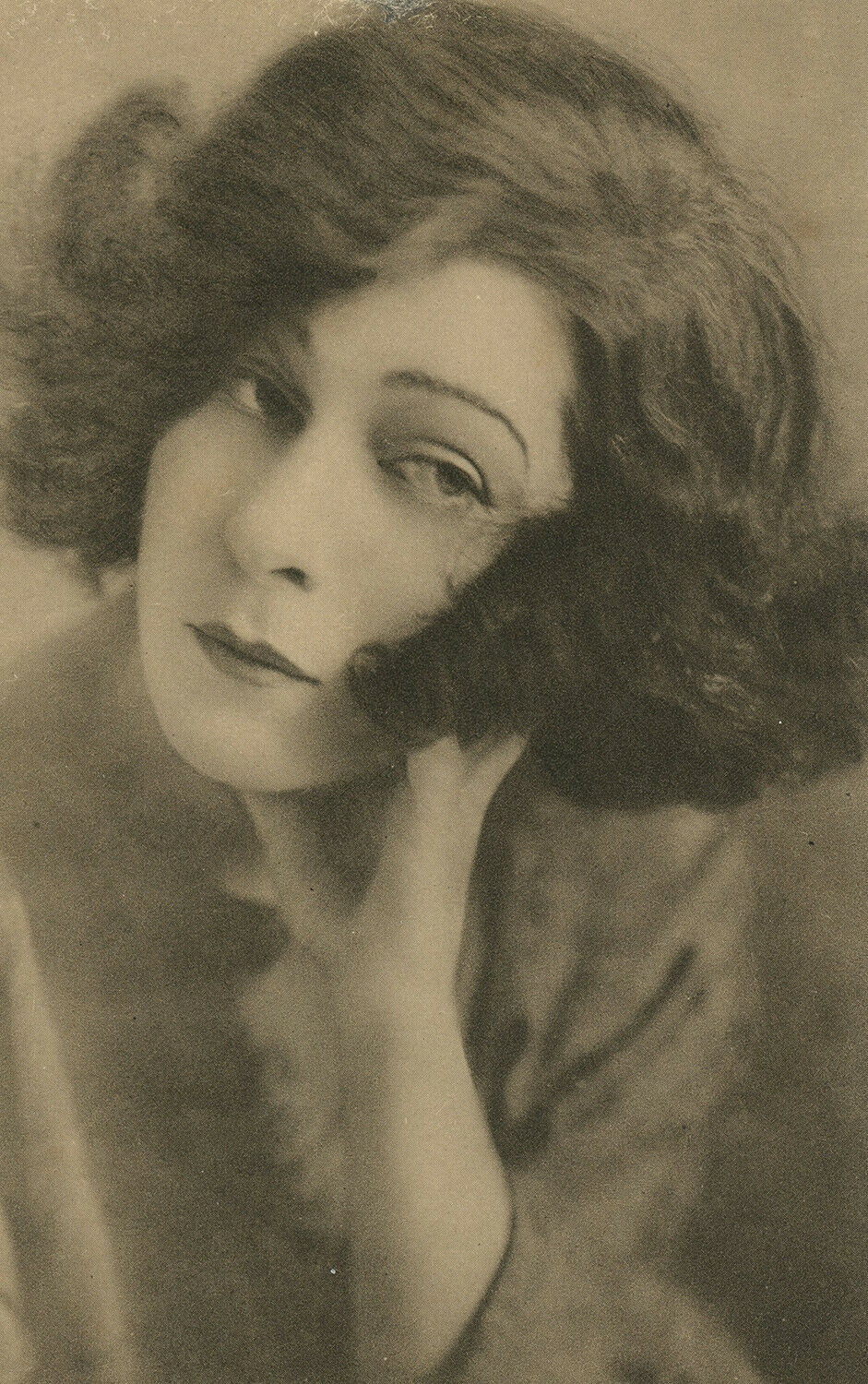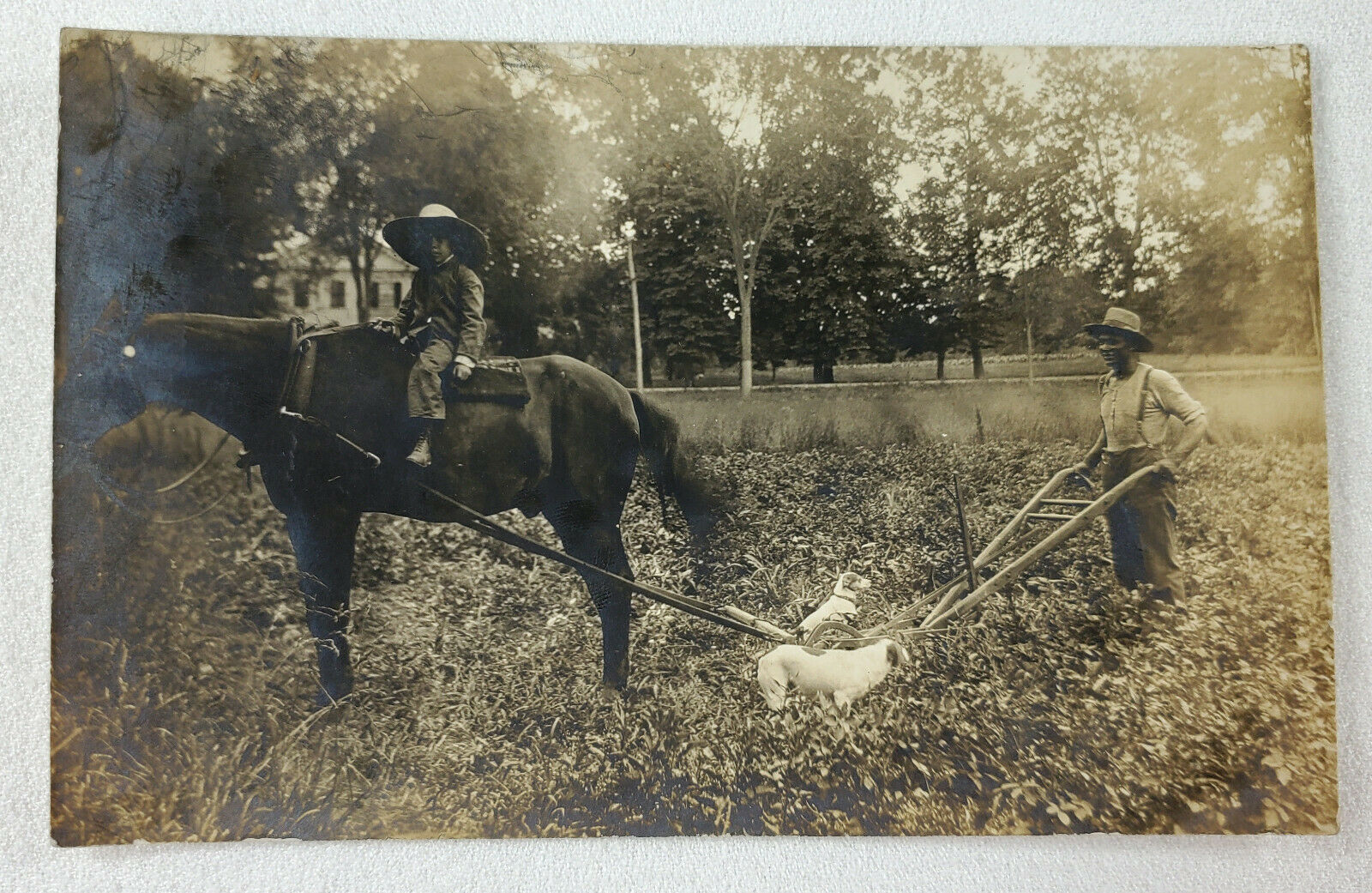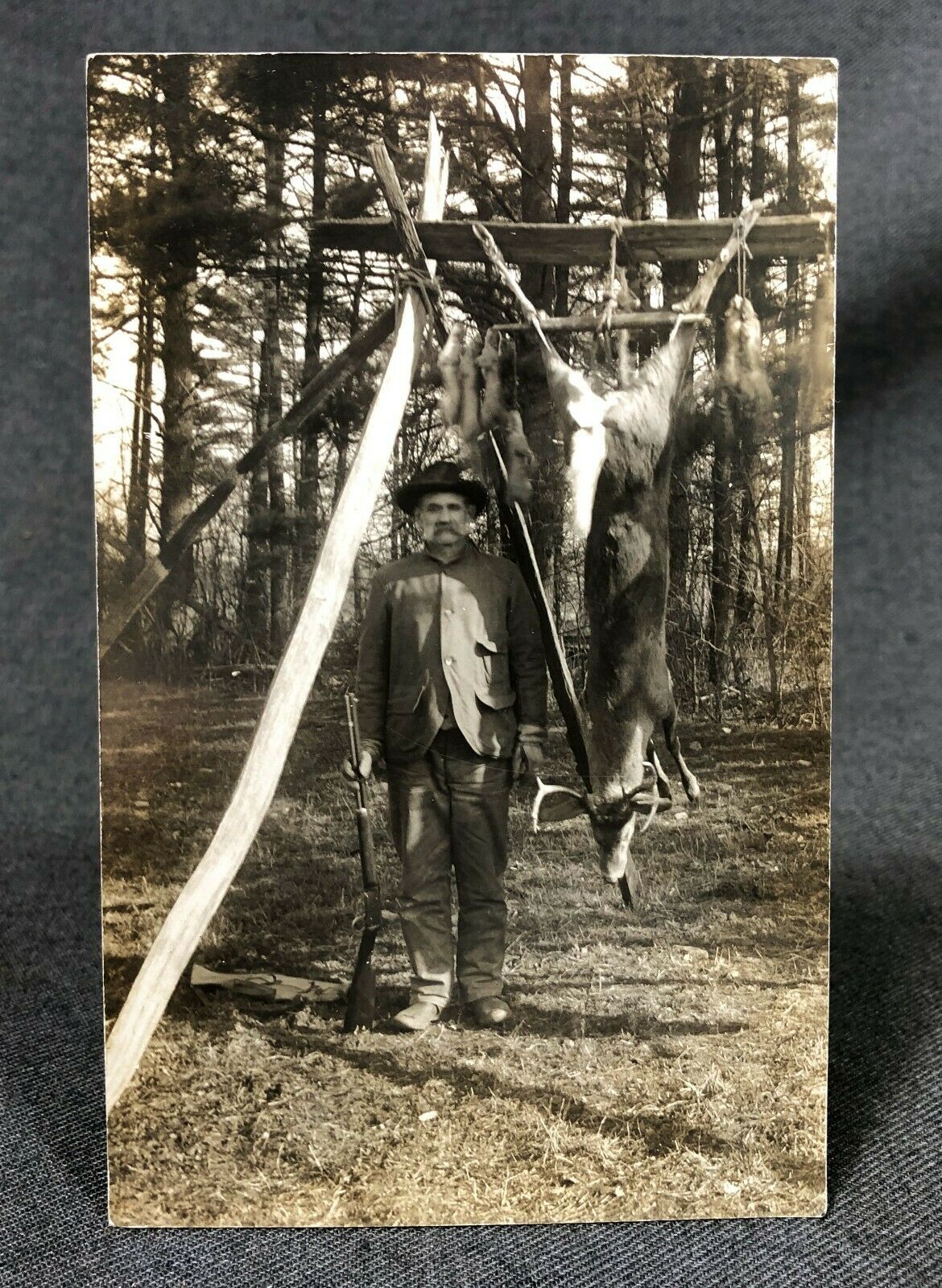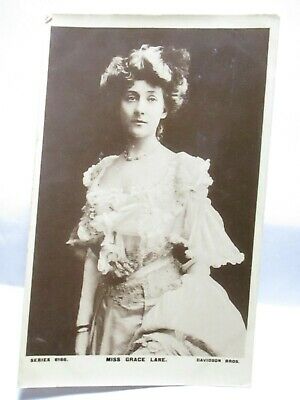-40%
Original '20s Silent Film Alla Nazimova French Real Photo Postcard RPPC Unposted
$ 2.61
- Description
- Size Guide
Description
ITEM: This is a 1920s vintage and original real photo postcard (RPPC) featuring a gorgeous portrait of silent film actress Alla Nazimova. This unposted postcard is a wonderful old Hollywood collectible!On Broadway, the Russian-American actress was noted for her work in the classic plays of Ibsen, Chekhov and Turgenev. She later moved on to film, where she served many production roles, both writing and directing films under pseudonyms. Her film "Salome" (1923) is regarded as a cultural landmark. Nazimova openly conducted relationships with women, and created the Garden of Allah hotel, which became a retreat for many celebrities of the time. She is credited with having originated the phrase "sewing circle" as a discreet code for lesbian or bisexual actresses.
Postcard measures 3.5" x 5.5"
Guaranteed to be 100% vintage and original from Grapefruit Moon Gallery.
More about Alla Nazimova:
Though she entered motion pictures later in her career than the average actress, Alla Nazimova had already become a star, thanks to a number of acclaimed performances on stage both overseas and on Broadway. Nazimova originally made a name for herself in her native Russia before achieving international stardom in Europe, notably with performances both in Berlin and London in plays by Henrik Ibsen and Anton Chekhov. She came to the United States in 1905 and quickly established herself as a Broadway star, before making her film debut at age 37 in "War Brides" (1916). In films, Nazimova rose rapidly to stardom as well, using her newly acquired Hollywood power to assist the careers of many young up-and-coming actresses, some of whom she had romantic affairs with, much to the dismay of the tight-knit town's power brokers. Nazimova also began producing many of her films like "Eye for Eye" (1918), "The Heart of a Child" (1920) and "Madame Peacock" (1920). After starring opposite Rudolph Valentino in "Camille" (1921), Nazimova's film career came to a crashing end thanks to the financial failure of her pet project, "Salome" (1922). She went back to Broadway for over a decade before returning to pictures with supporting roles in "Escape" (1940), "Blood and Sand" (1941), and "Since You Went Away" (1944), her final film. Nazimova remained a notable performer whose wild personal life often overshadowed her exemplary talents on stage and screen.
Born on June 4, 1879 in Yalta, Crimea - then part of the Russian Empire, but now in southern Ukraine - Nazimova was raised in a Jewish family by her father, Yakov Leventon, a chemist, and her mother, Sonya Horowitz. Her home life was disrupted when Nazimova's parents divorced, which led to her being sent to live with another family in Switzerland. Nazimova was a precocious child and began playing violin when she was seven years old, while moving about a number of boarding schools and relatives' homes. At 12 years old, she enrolled at the Imperial Gymnasium and later attended the Philharmonic School in Moscow, where she studied acting. In 1898, she was an apprentice at Constantin Stanislavsky's Moscow Art Theatre and performed in a number of stock productions throughout Russia, while the following year she married fellow actor, Seryozha Golovin, though later it was revealed to have been in-name only. Meanwhile, she began making a name for herself on stage while performing with the Kostroma stock company, where she met star Pavel Orlenev, with whom she had a passionate love affair.
Together with Orlenev, Nazimova became a star in her own right, particularly when their company was granted permission to tour Europe in 1904. First starting in Berlin, the company moved on to London where she electrified audiences with her performance in "The Chosen People." Nazimova immigrated to the United States in 1905 and made her New York debut with Orlenev's company in a reprisal of "The Chosen People," as well as the classical work "Tsar Fyodor." In 1906, she left Orlenev and signed a contract with Lee Shubert to star in Henrik Ibsen's "Hedda Gabler," for which she was hailed as one of the finest actresses to ever play the role. Over the next several years, Nazimova shined on Broadway in a wide range of roles, playing everything from Nora in Ibsen's "A Doll's House" to essaying a number of parts in the works of Anton Chekhov. Eventually Nazimova made her film debut at the relatively advanced age of 37 in the adaptation of "War Brides" (1916), reprising a role she performed on stage.
From there, Nazimova starred in a number of pictures that turned her into a star, paving the way to her earning ,000 a week in 1918 after signing a contract with Metro Pictures. She also moved into producing and even co-directing some of her films, as she did on "Eye for Eye" (1918). Nazimova was a success in such dramas as "Toys of Fate" (1918) and "The Red Lantern" (1919) and "Madame Peacock" (1920), while her only comedy, "The Brat" (1919), only enhanced her stature. In 1921, she starred as "Camille" opposite a young Rudolph Valentino as her Armand, with the future Mrs. Valentino, Natasha Rambova, who also designed the breathtaking Art Nouveau sets and costumes. During this time, Nazimova was earning quite the reputation for being generous with up-and-coming actresses she felt were talented. On a number of occasions, she engaged in romantic affairs with these actresses and over the course of her career had liaisons with a number of notable stars, including Jean Acker, Mercedes de Acosta and Eva Le Gallienne. Eventually she engaged in a long term relationship with actress Glesca Marshall, with whom she lived in her infamous Sunset Boulevard apartment complex called the Garden of Allah, site of numerous wild parties attended by top celebrities and artists.
In 1922, Nazimova left Metro to sign with United Artists and reprised Nora for the silent film version of "A Doll's House." She followed with her pet project, an Aubrey Beardsley-inspired version of Oscar Wilde's "Salome" (1922), which was full of outlandish costumes, extravagant set pieces and overacting, as well as being completely devoid of any plot. The film was a financial disaster and ended Nazimova's producing career. Soon she found her star fading and would go on to appear in only a few more films before returning to Broadway before the advent of talkies, where she won acclaim as Raynevskaya in "The Cherry Orchard" (1928) and originated Christine Mannon in Eugene O'Neill's "Mourning Becomes Electra" (1931). She had a major success with Henrik Ibsen's "Ghosts," but ran into health issues when she had a mastectomy in 1936. Nazimova made her final Broadway appearance opposite Montgomery Clift in "The Mother" (1939) and had her first speaking part in the pre-World War II drama, "Escape" (1940), starring Norma Shearer. She next co-starred opposite Tyrone Power and Rita Hayworth in "Blood and Sand" (1941), a film remade from a 1922 version that starred Rudolph Valentino. After supporting roles in the romantic drama "In Our Time" (1944) and "The Bridge of San Luis Rey" (1944), Nazimova made her final film appearance in the Oscar-nominated "Since You Went Away" (1944), which starred Claudette Colbert, Jennifer Jones, Joseph Cotten and Shirley Temple. She died on July 13, 1945 from a coronary thrombosis at 66 years old.
TCM | Turner Classic Movies Biography By: Shawn Dwyer
